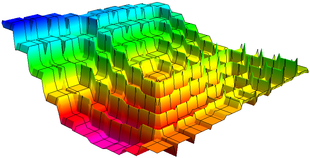10-327/Classnotes for Thursday November 25: Difference between revisions
From Drorbn
Jump to navigationJump to search
Liuqiong.shi (talk | contribs) No edit summary |
No edit summary |
||
| Line 8: | Line 8: | ||
[http://katlas.org/drorbn/images/3/38/10-327_Nov_25_LecNotes.pdf Lecture Nov 25] |
[http://katlas.org/drorbn/images/3/38/10-327_Nov_25_LecNotes.pdf Lecture Nov 25] |
||
=== Question === |
|||
Question. The first half of Tietze's theorem isn't very surprising as a limiting process of approximations. |
|||
But the second half is just like a magic? I don't understand what has been implicitly used here. The "boundedness" |
|||
property only depends on the metric we define on a set and it does not have anything to do with topology. |
|||
We are linking R with (-1,1) with a homeomorphism which is completely not metric-related. And suddenly all the unbounded |
|||
cts functions all become bounded cts functions?......What has been used here? Did we implicitly redefined the metric? |
|||
Why it works out so smoothly just like a magic trick?... |
|||
-Kai |
|||
Revision as of 13:12, 5 December 2010
| ||||||||||||||||||||||||||||||||||||||||||||||||||||||||||||
See some blackboard shots at BBS/10_327-101125-142103.jpg.
| Dror's notes above / Student's notes below |
Here is a lecture note for today:
Question
Question. The first half of Tietze's theorem isn't very surprising as a limiting process of approximations. But the second half is just like a magic? I don't understand what has been implicitly used here. The "boundedness" property only depends on the metric we define on a set and it does not have anything to do with topology. We are linking R with (-1,1) with a homeomorphism which is completely not metric-related. And suddenly all the unbounded cts functions all become bounded cts functions?......What has been used here? Did we implicitly redefined the metric? Why it works out so smoothly just like a magic trick?...
-Kai

![{\displaystyle [0,1]}](https://wikimedia.org/api/rest_v1/media/math/render/svg/738f7d23bb2d9642bab520020873cccbef49768d)



